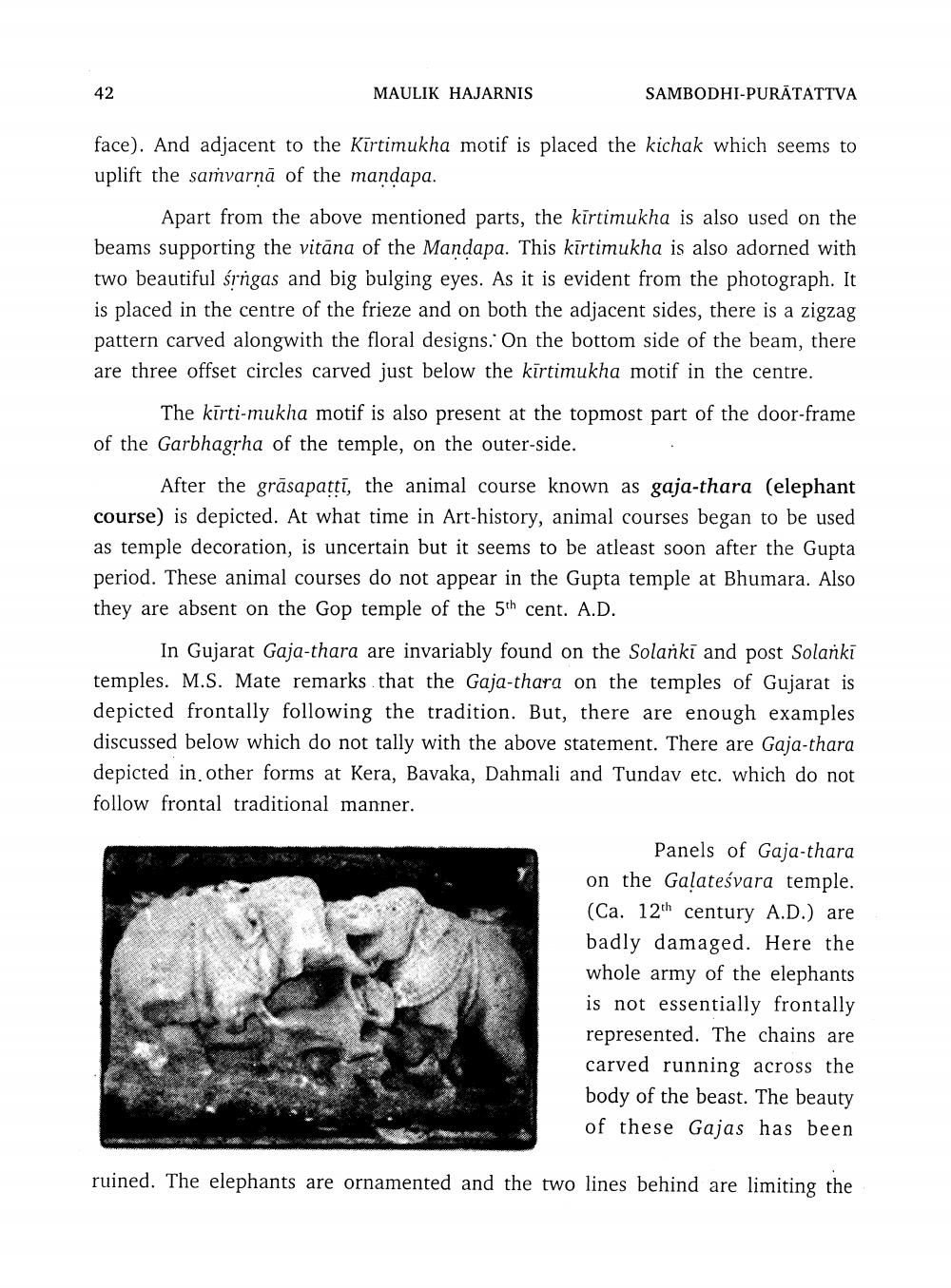________________
MAULIK HAJARNIS
SAMBODHI-PURĀTATTVA
face). And adjacent to the Kirtimukha motif is placed the kichak which seems to uplift the samvarņā of the mandapa.
Apart from the above mentioned parts, the kirtimukha is also used on the beams supporting the vitāna of the Mandapa. This kirtimukha is also adorned with two beautiful śrngas and big bulging eyes. As it is evident from the photograph. It is placed in the centre of the frieze and on both the adjacent sides, there is a zigzag pattern carved alongwith the floral designs. On the bottom side of the beam, there are three offset circles carved just below the kirtimukha motif in the centre.
The kīrti-mukha motif is also present at the topmost part of the door-frame of the Garbhagrha of the temple, on the outer-side.
After the grāsapatti, the animal course known as gaja-thara (elephant course) is depicted. At what time in Art-history, animal courses began to be used as temple decoration, is uncertain but it seems to be atleast soon after the Gupta period. These animal courses do not appear in the Gupta temple at Bhumara. Also they are absent on the Gop temple of the 5th cent. A.D.
In Gujarat Gaja-thara are invariably found on the Solanki and post Solanki temples. M.S. Mate remarks that the Gaja-thara on the temples of Gujarat is depicted frontally following the tradition. But, there are enough examples discussed below which do not tally with the above statement. There are Gaja-thara depicted in other forms at Kera, Bavaka, Dahmali and Tundav etc. which do not follow frontal traditional manner.
Panels of Gaja-thara on the Galateśvara temple. (Ca. 12th century A.D.) are badly damaged. Here the whole army of the elephants is not essentially frontally represented. The chains are carved running across the body of the beast. The beauty of these Gajas has been
ruined. The elephants are ornamented and the two lines behind are limiting the




